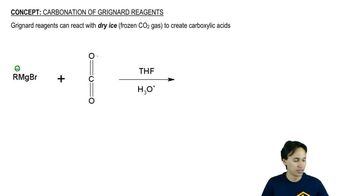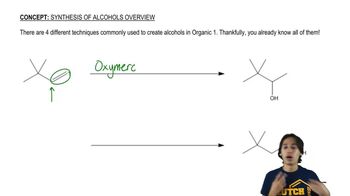The acid-catalyzed hydration we learned here in Chapter 8 is reversible.
(a) Propose a mechanism for the formation of an alkene from an alcohol.
 Verified step by step guidance
Verified step by step guidance Verified video answer for a similar problem:
Verified video answer for a similar problem:



 6:01m
6:01mMaster General features of acid-catalyzed dehydration. with a bite sized video explanation from Johnny
Start learning